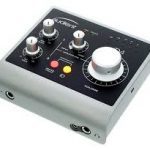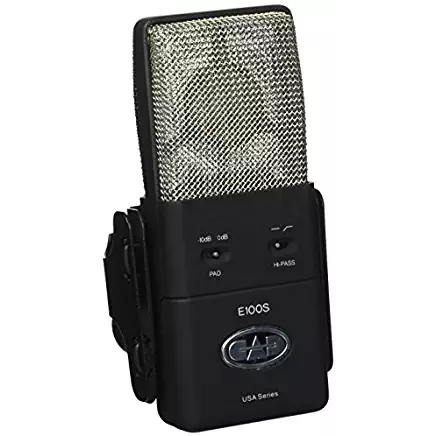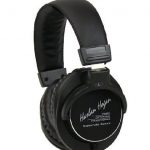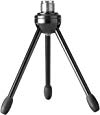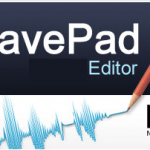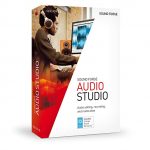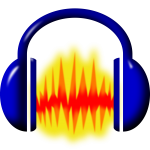The Podcast Dictionary of Commonly Used Terms
Advertisement, Ad
Advertisement, Ad: We could all probably say ad before we could say Mom or Dad, so we pretty much know what ads are and can probably recite, hum or sing several.
Pre-roll Ad: Ad before media content.
Mid-roll Ad: Ad in mid media content (usually if content is 10 minutes or longer).
Post-roll Ad: Ad after media content.
The big decision here is “Will the user remember (or be more affected by) the ad more before, during or after the content?”
Each place has its advantages and disadvantages. For example:
Pre-roll: Ad before content. Consumers are waiting to experience the presentation. But may forget the ad by the end of the show.
Mid-roll: Ad(s) in middle of content. Audience is involved in experiencing the show, present in body mind & soul, paying attention. But may take this opportunity for snack break.
Post-roll: Ad at end of content. Users may remember it better. But they can also just turn it off because they’re done with the featured art.
Ambient Audio, Sounds, Noise
Ambient Audio, Sounds, Noise: Background sound in a location, scene or space. Ambient relates to the immediate surroundings.
Depending on what is needed or wanted ambient sounds can be desirable or not so. The background audio can make or break a scene, mood or frame of reference. Complete silence is unusual in real life so it is more natural to have what is appropriate for the scene: people talking in a diner, busy streets, music, nature’s atmosphere and citizenry (rain, wind, birds and bugs). These all can be added later for more realism. Undesirable ambient noise like planes in the prehistoric jungle or static noises (click, pop, snap, hiss) can hopefully be edited out.
Amplitude
Amplitude: Loudness, volume, power, energy, part of a wavelength, vibration.
Visually amplitude is seen as part of a wavelength. As the screen displays the up and down lines on audio devices the amplitude (tallness of the wave lines) shows the volume of the sounds being made, the taller the wavelength the louder the sound.
Beats Per Minute, BPM
Beats Per Minute, BPM: Measurement of tempo. You can also call it cadence, rhythm, pace, pulse, speed, meter, pattern.
The amount of time allotted to a beat can vary and thus the BPM determines the tempo at which those beats are presented.
Bit Depth
Bit Depth: Shows how many bits of information are in a specific sample.
More bits of information result in better quality, used in Pulse Code Modulation (PCM) digital signals.
Bit Rate, Bitrate
Bit Rate, Bitrate: Speed that bits of information are transmitted per second, measurement of how much data is transmitted from one location to another in a set amount of time:
low Bit Rate = smaller file = lower quality
high Bit Rate = larger file = higher quality
In other words it is how fast the data is processed in bits per second. Depending on various factors Bit Rate affects the quality of the sound.
Constant Bit Rate, CBR: Encoding the bits per second steadily and continuously the same, this usually helps it get processed faster than Variable Bit Rate.
Variable Bit Rate, VBR: In VBR the Bit Rate fluctuates throughout the track, making a compromise between smaller file size and better quality product, with the Bit Rate low when fewer frequencies are used and higher when more frequencies are used. So all play nice together…now for world peace…
Boom Microphone
Boom Microphone: An adjustable pole with a microphone on the end, used to record audio.
Boom Stand
Boom Stand: A stand with two adjustable poles, one vertical and one horizontal. A microphone can be attached to the horizontal pole. Both poles can be adjusted.
It can stand on its own, be placed away from the speaker/singer and the poles can be adapted to various situations and positions so the mic can be close to the performer and the Boom Stand on the other side of anything large that needs to be gotten around like equipment, furniture or large instruments.
Bouncing Audio
Bouncing Audio: Record several tracks, mix together and record onto a new track, repeat as necessary recording and combining till you have your finished product. This gives consolidation and processing assistance and advantages to the creative team.
It’s kind of like having an audio combo of James Bond, your favorite cooking show and Maverick. Tracks are shaken, stirred and shuffled together till you get your masterpiece of creative collaborative art.
Branded Content Podcast
Branded Content Podcast: Advertainment with content about the brand, of the brand, for the brand and by the brand…or more to the point – buy the brand!
Channel
Channel: Track.
Channels/tracks can be used individually or mixed together, recording individual channels and then mixing allows for changes before the whole piece is put together.
Clipping
Clipping: A type of sound wave warping, it distorts sounds. Depending on whether distorted sounds are wanted or unwanted, clipping is typified by electric rock music (wanted) or it pushes the limits and can damage equipment and ruin recordings (unwanted).
Compression
Compression: Depending on what you want, it is adjusting the loud and quiet parts of a recording, making the loud stuff…quieter and the quiet stuff…louder.
Cost Per Acquisition, CPA / Cost Per Action, CPA
Cost Per Acquisition, CPA / Cost Per Action, CPA: Marketing model whereby an advertiser pays a website when a user or potential client completes an action regarding an ad, such as clicking on it, calling, using a special code, registering an email, signing up for a newsletter, filling out a contact form, etc. The goal is: ask and you shall receive …a response from a person.
Cost Per Click, CPC / Pay Per Click, PPC
Cost Per Click, CPC / Pay Per Click, PPC: Marketing model where the advertiser pays a website every time a user or potential customer clicks on the advertiser’s ad.
It should be spelled Ka-Ching! Per Click.
Cost Per Mille, CPM / Cost Per Thousand, CPT
Cost Per Mille, CPM / Cost Per Thousand, CPT: Mille means 1,000 in several languages. For every 1,000 times an ad reaches a user the advertiser pays a certain amount, whether the potential customers are reading (magazines, newsletters, newspapers), listening (podcasts, radio) or viewing (online, websites, television).
Whether this advertising method is cost effective or not the advertiser must determine, but this may be the best gamble in town when a thousand may get you mille-ion$.
Cross Fade
Cross Fade: Mingling two audios together into one in order to craft a satisfactory transition from one to the other.
Decibel
Decibel: Measurement of the level of the volume.
Decibel True Peak, DBTP, dBTP
Decibel True Peak, DBTP, dBTP: Measurement of loudness in an audio broadcast. A decibel is a way of describing the sound level. True Peak is the highest position of an analog signal, it has been used as a measurement to make sure the broadcast is not too loud.
Diffraction
Diffraction: The bending or spreading of sound waves because they encountered something like an obstacle or small or narrow space that they must go around or through.
Direct Marketing Area, DMA
Direct Marketing Area, DMA: Demographics…or…in other words location, location, location…knowing geographical factors plus age, income, consumerism, race, sex, education, product use and any other important dynamic.
Getting the right info, about the right people, to the right people, at the right time, in the right way, for the right purpose…
So what could go wrong?
Direct Response Advertising, DRA / Direct Response Marketing, DRM
Direct Response Advertising, DRA / Direct Response Marketing, DRM: Marketing model designed to get a user or potential customer to act in response to an ad…as soon as NOW as possible. This could be anything that connects the user to the advertiser such as clicking on the ad, registering an email, signing up for a newsletter or contest or promotion, etc.
Equalization, EQ
Equalization EQ: Method for increasing or reducing the levels of various frequencies in sounds.
Treble tones are the higher frequencies. Bass tones are the lower frequencies. In certain instances there is a need to soften or reduce certain sounds (maybe background noise) or make certain sounds stand out (a featured singer or instrument).
External Line Return, XLR
External Line Return, XLR: An audio connection and type of cable.
Fade
Fade: A technique in which sound is gradually increased (fade in) or decreased (fade out) in regard to the desired result or effect.
Frequency Band
Frequency Band: A section of frequencies next to each other.
There are many frequencies in the whole range of frequencies. To work with and more clearly refer to them groups or sections of frequencies next to each other are called bands. The frequencies range from very low to very high, similar to the range between a low bass and a flute. If you were viewing an audio display the frequency band would appear as some North-South lines on the screen bundled together.
Gain
Gain: Measurement and control of the sound coming in.
Gain controls can be used to adjust sounds because certain frequencies can seem louder or quieter to us. Gain controls manage the amount of sound that goes in. It differs from volume in that volume is the amount of sound that comes out.
Gain in. Volume out.
Headroom
Headroom: An “early warning sign” that the recording has reached its maximum limits, going into and past the headroom will destroy what you are trying to achieve.
Keeping the audio out of the headroom keeps the music in the heart of the soul.
Hertz, Hz
Hertz, Hz: Measurement of wavelengths, one Hertz is one complete wave/cycle per second. Sound produces vibration which produces wavelengths. These waves can vibrate as short close together waves (high pitch) or tall farther apart waves (low pitch). All these waves can be measured in Hertz.
Hum
Hum: Undesirable background noise vibration.
Hum is an unwanted sound coming through equipment. Can be caused by a variety of reasons: ground loops of the building’s electrical system (when more than one piece of equipment is connected on the same circuit even if they are on different outlets), poor shielding, cable problems, magnetic fields, etc.
An undesirable hum in audio is a definite negative. Humming in the shower, on the other hand, is always a plus.
Impression
Impression: Each time an ad is offered to a person whether it is given attention or not.
An impression is one ad, one time, to one person, with one presentation (web page, magazine, radio, TV, etc.). One person can be offered it many times and many people can be offered it once. Each time is an impression. The total number of impressions is how many times this happens.
When the ad is presented to the consumers the advertiser is gambling that people are feeling like thinking about this ad with conscious perception and it is inspiring them to have an exciting impression about it. With any luck they are not talking on the phone, haven’t fallen asleep or gone on a snack break. Either way, whether they pay attention to it or not, it’s an impression…hopefully a good one.
What is your impression of this marketing concept?
Impression Cap
Impression Cap: The limit of times an ad is presented to consumers. The advertiser can better control the budget with this marketing technique and can use relevant data gathered from this method (how many responses did this amount of advertising explicitly elicit, cost vs income, etc).
Insertion Order
Insertion Order: An order or contract between two entities (advertiser and advertisee) regarding the details of how an ad will be handled in print, online or other media, etc.
Who does what, when and how. Why? So things can run smoothly, win-win.
Kilobits, Kilo bits, kb/s, Kbps, kbps
Kilobits, Kilo bits, kb/s, Kbps, kbps: Kilobits per second. A Bit is the smallest measurement of data. Kilobit is one thousand bits. Kilobits measure the amount of data transfer per second. The more bits transferred per second = more speed = faster transfer of data = faster connections.
Kilobytes, Kilo Bytes, KBPS, KBps
Kilobytes, Kilo Bytes, KBPS, KBps: Kilobytes per second. A measurement of data.
Bit, Kilobit, Byte, Kilobyte: These are all measurements of data. Bit (smallest unit), Kilobit (1,000 Bits), Byte (8 Kilobits), Kilobyte (1,000 Bytes).
You don’t have to bear the burden of being confused here. Remember the story of Goldilocks and the Three Bears? Unless you must do something very technical just bear in mind that, like the bears Goldilocks found, each of the above terms is incrementally bigger and more powerful than the previous one. So bear in mind if you understand this enough for your purposes your efforts to understand will bear fruit.
Just don’t “byte” off more than you can chew because a Byte is eight times more than a Bit.
Keyframe
Keyframe: In producing media it is a place on a timeline that marks a transition (beginning &/or end such as fade in, fade out).
Latency
Latency: The time delay between the audio going into the audio system and coming out of it. Usually unnoticed (milliseconds) but if it becomes noticeable, don’t delay, take the time to fix it.
Lavaliere
Lavaliere: Small, hands free microphone worn around the neck or on the lapel or clothing.
Lossless Audio
Lossless Audio: Digital file formats in which the audio doesn’t lose any of its qualities. What you hear is what you get.
In other words “The music goes ’round and around and it comes out here” …sounding exactly how it went in.
(words from The Music Goes ‘Round and Around, music by Ed Farley and Mike Riley, lyrics by Red Hodgson)
Lossy Audio
Lossy Audio: Digital file formats in which the audio loses some of its high and low qualities because of compression to make the file smaller by removing these. Will not sound exactly like the original.
Loudness Range, LRA
Loudness Range, LRA: Measures the audio range between the quietest and loudest aspects of the audio.
Loudness Unit, LU
Loudness Unit, LU: A portion or unit of measurement for sound. Loudness Units measure loudness variations in a program between quiet and loud parts.
Loudness Units Full Scale, LUFS / Loudness K-weighted Full Scale, LKFS
Loudness Units Full Scale, LUFS: A loudness standard used to normalize audio levels. Sound levels can change suddenly (usually the problem is sound undesirably louder, as in a commercial during a program), LUFS is one of the factors used to analyze loudness and it specifies how loud a program is on average.
Max Peak Level
Max Peak Level: A setting that normalizes the gain of an audio clip by the appropriate amount so it doesn’t go above the maximum level you set.
Metadata
Metadata: Metadata puts together data to make working with it easier by describing it and giving information about it. Metadata can be used to make tags, to describe/identify/organize resources, to organize documents with date created, file type, file size, technical info, etc. I’ve never metadata i didn’t like.
Mixdown of Audio
Mixdown of Audio: Method of blending separately recorded tracks to a final product using various processes to achieve the results you want to create.
Monitor
Monitor: A piece of equipment used for, &/or the act of, observing and managing audio.
Mono
Mono: One audio source. All sound comes through one source.
Multitrack Audio
Multitrack Audio: Combining various sound tracks and being able to choose which tracks to use for each sound you have (voice, music, etc.)
Narrative Podcast
Narrative Podcast: A podcast is a digital audio file for the Internet, computer or other device as a stand-alone performance or a series. A narrative is a story so a Narrative Podcast is a storytelling podcast.
Noise
Noise: Unwanted fluctuations in an electrical signal that distorts, interferes with or obscures it.
Panning
Panning: Controls how much of a specific sound comes from the left or right channel/speaker and by manipulating the amount of sound coming from each one you can make various sounds (like musical instrument) come from different places. This can give a much wider sound experience.
Peak
Peak: The topmost part of a waveform, high peaks indicate louder sounds.
Phantom Power
Phantom Power: A factor to consider, when buying certain equipment, regarding the use of electrical currents.
Podcast
Podcast: Prerecorded online media broadcasts available to users 24/7 for a variety of devices.
Long, long ago in a time far, far away a user (called a person) would have to enjoy a performance at a specific time, in a specific place, on a limited number of devices (TV, radio) because there were no recording devices or playback methods. They called what is available today science fiction.
Podcast Discovery
Podcast Discovery: A kind of matchmaking service that helps put content creators together with their potential audience, win-win everybody’s happy.
Podcast Episode
Podcast Episode: Another installment in an ongoing online audio or video experience.
Podcast: Episodic, Episodic Podcast
Podcast: Episodic, Episodic Podcast: A stand-alone podcast, not part of a series of connected podcasts. A single, solo, separate, individual, periodic podcast…period! No need to binge watch to get the most out of this one.
Podcast Hosting
Podcast Hosting: “Place” to organize, manage, store, analyze and do any other of the many necessary requirements for media files to be able to be used through the Internet and various devices.
Podcast Network
Podcast Network: A group of podcasts produced and distributed through a particular company which is called a network.
Podcast Syndication
Podcast Syndication: A group or association that unites to promote a common interest and uses a plan for business to benefit all of them. For example by distributing a particular set of podcasts to various places to make money through the syndicate (no sin in that!)
Podcatcher
Podcatcher: An app (software) that enables a user to download, listen to, view and organize online digital media.
Podfather
Podfather: Crafted from Pod and Godfather, a name given to a variety of people in the podcast world, designed to refer to the power, creativity and respect they engender, and making you offers you can’t refuse…because podcasts and podcasting are so much fun.
Pop filter
Pop filter: A type of shield or protector that prevents noise caused by the proximity of a person’s mouth when they make certain speaking and singing sounds.
Post Production
Podcatcher
Post Production: After the performance the people behind the scenes will do all they can to make sure the end product is the best it can be. This includes but is definitely not limited to using their skills in the creative process (such as editing, writing &/or rewriting, recording more &/or rerecording, color correction, adding music and/or sound effects) and managing different people and departments (such as producers, editors, clients).
…It also used to involve splicing film and maybe even typing on a typewriter, sheeech what a way to live!
Range of a Human Voice, Normal Vocal Range
Range of a Human Voice, Normal Vocal Range: Between 1.5-2 octaves and the frequencies can be measured in Hertz.
Root Mean Square, RMS
Root Mean Square, RMS: The short answer is that the RMS is an equation and one of the tools to measure AC current or voltage.
Simple Definitions for RMS:
Root: The root is a number (call it N) multiplied times itself (N x N) a certain amount of times, you choose the amount of times (N x N x N x N…), which gives you another number (call it #N). You can use the root number (and the #N) in different specific ways (dare we say multiple ways?). So there are many calculations that can be done with this depending on what you want to accomplish.
Mean: Average.
Square: Multiply a number by itself once.
If you like arithmetic you may have fun calculating with this mathematical equation. If you’re not a math fan the Root Mean Square is a sure formula for putting you squarely on the route to feeling mean.
Really Simple Syndication, RSS
Really Simple Syndication, RSS: RSS is designed to make your life easier by helping you Keep It Simple Sweetie (KISS).
It’s Really Super Simple (another RSS moment). All you do is set up the software, subscribed to the feeds you want and then you automatically get new content as soon as it becomes available. It is a way to collect all your feeds in one practical place, a convenient time saver.
Return on Advertising Spend(ing), ROAS
Return on Advertising Spend(ing) ROAS: The amount of income a company receives (Return) for every ad dollar it spends (Spend, Spending). It is useful info so they can evaluate the success of an ad campaign in a particular location (what works, what needs improvement).
They are using the formula “You’ve got to spend money to make money” which is a bit easier to calculate than the Root Mean Square and a lot more fun if there’s more money coming in than going out.
This needs no further explanation because it is really self explanatory, as the saying goes “Money talks.”
Sample Rate
Sample Rate: Number of samples of audio per second, measured in Hz or kHz.
Sponsor Read
Sponsor Read: A more personalized ad for the sponsor of a podcast. The podcaster gives what is basically an approval of the product by speaking about the sponsor’s product or service, especially if the podcaster says through direct experience it is known to be good because it is used personally. This endorsement can be closely associated with the content of the program and integrated into the program.
The podcaster speaks and states specifically that said podcaster is personally pleased to promote the product because it is used privately and /or publicly by the podcast person and the podcast person will proclaim and pronounce that perfectly, three times fast, whether the statements are about Peter who picked a peck of pickled peppers or about peas, potatoes, petunias, Porsches or porches. The particulars are punctilious with sincere earnestness. The podcaster supplies the sponsor with this space on the show to help ensure super special spectacular success and the sum of dollar$ $igns to surge skyward. Yes, it is that simple.
Stereo
Stereo: Using more than one speaker to make a more satisfying wider entertainment experience.
Different sounds and different amounts of sound can come from each speaker and this gives the audio a richer, more interesting sound.
Time Shifted Broadcast
Time Shifted Broadcast: Recording a program for later use, for example Podcast, Radio, TV.
Trailer
Trailer: Preview, commercial, ad, coming attraction – used to market the full media product.
Transducer
Transducer: Transformer that changes one kind of energy to another kind.
User Engagement
User Engagement: How and how many people follow through on what an ad asks them to do, for example: to call, click, visit, like, check out, subscribe, buy, use a code, go on social media, get a deal, use a coupon, respond to a promotion…
User Retention
User Retention: Capacity to hold onto customers over specific amounts of time. Retained customers bring continued profits…and tell their friends.
Waveform
Waveform: An image of an audio signal in the shape of a wave. It enables people to see sound.
It brings a new level of meaning to “wave hello.”
Windowing
Windowing: Marketing strategy used to persuade consumers to buy, subscribe, join and use their offer by setting a small amount of time (window) for consumers to buy, subscribe, join and use their offer.
In other words they want the consumer to purchase, use regularly, connect and utilize their product or service NOW!


